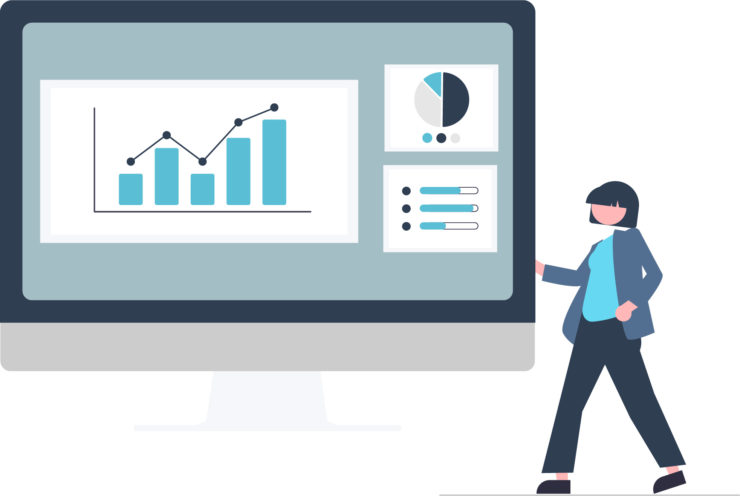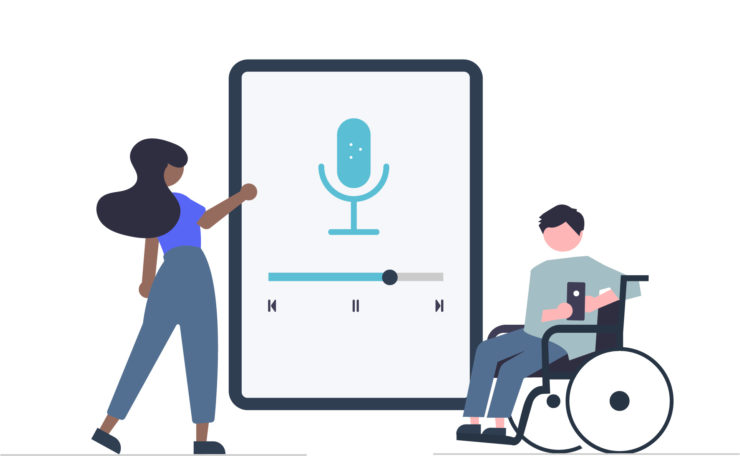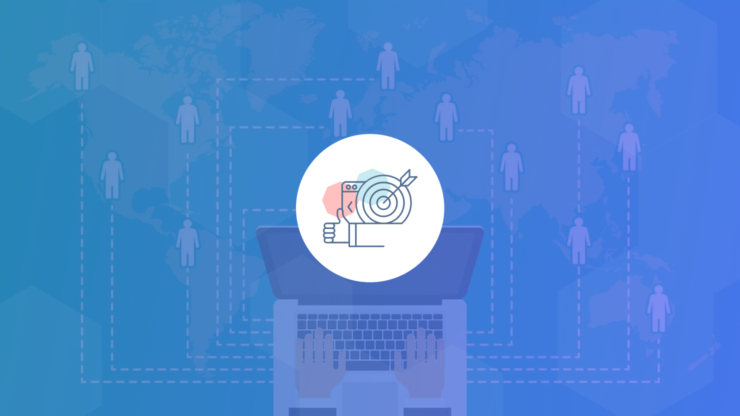Do you know the feeling of spending large chunks of your advertising budget on a platform that isn’t translating clicks into leads? We hear you, loud and clear. If you’re spending your budget on paid advertising, you want the platform to be the right one. Even if you’re aiming for organic reach, the channel you optimise for is essential to the success of your ad campaign.
Every business has gone through the same process of trial and error to see what fits. Well, now you don’t have to, because we’ve done it for you.
You can now sit back and watch your conversion rate increase after this 9 minute podcast without wasting your time and money on the wrong platform.
Throughout the debate, we discuss whether LinkedIn or Google Ads are better for your digital advertising strategy. Both are exceptional choices for providing ROI, but they serve opposing purposes.
Through this blog, we dive deeper into the following topics:
- The Advantages of Google Ads
- The Disadvantages of Google Ads
- The Advantages of LinkedIn Ads
- The Disadvantages of LinkedIn Ads
- Summary
- Podcast
- Transcript

What are Google Ads?
Google Ads helps marketers expand their reach within digital campaigns using PPC advertising. Google displays your ads on their platform in front of your target audience.
What are the advantages of Google Ads?
Google ads are an affordable option for your PPC advertising strategy. It is a viable option for any size business, even though the cost can vary based on the industry. What makes Google Ads an affordable option is a choice to bet on different keywords.
It comes as no surprise that the competitive keywords cost the most. However, this sometimes can be worth the investment. People turn to search engines to find specific answers to their queries, making Google the best place to display your relevant content pieces to your users.
How can Google Ads help you achieve your business objectives?
Besides being a cheap and classic option, Google also provides an extensive list of tools that can help heighten your ad campaign. For example, the keyword planner allows you to choose the best keywords based on the type of industry, cost, your existing content, average monthly searches, and more. It makes advertising seem as easy as a couple of clicks.
Once you have produced your ads, you can then easily measure ROI and analyse your results for the success of your future advertising campaigns. Google ads are an investment for the future effectiveness of your digital marketing strategies.
Google Ads is just the start. There are several tools Google can offer to fool-proof your overall business strategy, extending from ad spend.

What are the disadvantages of Google Ads?
Google is the largest search engine, and the platform people turn to most when they want something. This comes with so much possibility, but also the stress of mismanaging your account.
Monitoring your ads is essential to avoid any mistakes and to ensure your campaign is converting. Put simply, you need to be able to easily tweak it if need be, however, it can be a completely time-consuming process.
How much do Google ads cost?
Although ‘$1 per click’ sounds cheap on paper, it can add up fast. It does not matter if the click converted into a sale. You will still have to open your wallet for that click. After a while, it may begin to be more expensive in the long run. It can lead to another disadvantage for small to medium-sized businesses. As soon as your ad spend runs out, so will your Google ad campaign.
The price of the keywords is determined based on the competitiveness of that word. So if you want to show up for relevant and frequent queries, you’ll have to prepare a larger budget. Putting in place a good SEO strategy will help to further increase the organic traffic to your website. Which should dyou focus on first, you ask? Listen in to our previous podcast on SEO vs Google Ads to hear our thoughts.

What are LinkedIn Ads
LinkedIn allows you to network with other professionals online on a business-orientated social media platform. It offers job opportunities, potential client base and allows you to build brand awareness. This network is an essential space to market products or services through LinkedIn ads. Previously it was an easy win for any other platform over LinkedIn, however, over the recent years, LinkedIn has upped its game in terms of its advertising. There are many more benefits of social media marketing that are increasing steadily.
Advantages of LinkedIn Ads
LinkedIn advertising is extremely efficient for B2B marketers or other business professionals.
This platform allows you to target users based on specific criteria and data shared by the audience themselves. By narrowing down on who you target, you have a higher chance of capturing quality leads. Facebook Ads and other social media platforms also offer this, however, LinkedIn definitely takes the cake for specifically targeted advertising.

The data you can use to target people includes:
- Age
- Gender
- Industry
- Work history
- Location
- School attended
- Everything in between related to their professional history.
It is safe to assume most people who are active on LinkedIn keep their profiles up to date and therefore give confidence to the accuracy of your advertising efforts.
Advertising on LinkedIn is much less competitive, especially in comparison to other social networking sites like Facebook. This means your business has the potential to be in front of potential customers more easily, without your competitors stealing the click from you. It’s a pretty great bonus if you ask us.
These easy targeting options and simple interface provide an instinctive user experience which helps to improve the click rate of your ad.
Disadvantages of LinkedIn Ads
LinkedIn’s reporting dashboard offers only the bare minimum for tools. Marketers don’t have access to the metrics and insights available on other platforms. It’s hard to create insights from the data, as well as reporting to justify ad spend.
It is vital to test out what works with your audience, especially when only just starting. Understanding what type of content is causing traction is what propels your business forward faster. However, this is something that LinkedIn lacks. Marketers have difficulty bulk editing or duplicating content within the platform through its lack of tools. It makes the process of testing slow.
LinkedIn has a relatively expensive minimum for CPC and CPM. It can sometimes be double what Google offers. They also require a minimum daily budget, which can become hard to commit as a small or startup business. However, due to the high conversion rate of LinkedIn, it makes the high cost-per-click a worthwhile investment.

Summary
Overall, when deciding on which platform to advertise on, it all comes down to user intent. Who are your customers, and where are they mainly online? By answering these questions, you can begin to understand more about where you need your business to show up. Both Google Ads and LinkedIn ads have their pros and cons. It’s important to understand the details of each advertising platform, particularly for small to medium-sized.
If you want further insights into the best advertising strategy, we also debate the difference between Facebook remarketing and Google Display Networking. This will help to outline the best option for your business.

Marketing Debate Podcast
Listen in to James and Joseph’s heated debate where there can only be one winner. Who will it be? Let’s find out. Be sure to let us know who you agree with within the comments.
Episode Transcript
James Banks:
Hello everyone. And welcome to another episode of the Web3 Marketing Debate Show. I am your host, James Banks.
Joseph Chesterton:
And I’m your host, Joseph Chesterton.
James Banks:
And today we have another awesome debate topic, which is Google ads versus LinkedIn ads. Which one is better for business? So for this debate, I’ll be defending LinkedIn ads.
Joseph Chesterton:
And I’ll be winning with Google ads.
James Banks:
Those are fighting words, Joseph. Well, let’s see what you’re made out of. So, all right, let’s kick things off. Why would you say Google ads are better than LinkedIn ads for businesses to use?
Joseph Chesterton:
There’s a big difference between Google ads and LinkedIn ads. With Google ads, it’s not just advertising on Google. It’s advertising on almost every single website that has ads or uses the Google ads platform.
So, it’s 90% of the web versus one website, essentially, which makes this debate very difficult for you.
James Banks:
Well, site impressions don’t necessarily mean great results, Joseph. Heck, you can still outperform one high-converting site versus a whole bunch of shitty ones that produce a better result at the end of the day. So like again, I think there’s more to your argument there.
Joseph Chesterton:
Potentially. So where do people go online? They use social media. What else? Look up things. Recipes. I don’t know. Look at pictures of cats. All these different websites have ads on them, more than likely.
If you’re looking at social media, then Facebook, Instagram, Pinterest, and LinkedIn all have advertising. After that, then pretty much, the rest is Google advertising. So it’s very hard to answer Google ads vs. LinkedIn ads.
James Banks:
Oh yeah, I know it’s an apple orange comparison. But let’s say you had a small marketing budget that you couldn’t justify splitting across two different platforms. You need to choose a platform to invest your marketing and advertising budget.
For example, if you decide to move it into LinkedIn ads, well, I think you answered it yourself. Just because Google has the biggest horizontal spread for an advertising network online, it doesn’t necessarily mean it’s the best place to put your advertising budget.
LinkedIn, for example, is very narrow in terms of its breadth, but it’s very specific. It’s very specialised. There are lots of business and business professionals. You could be very granular around targeting individuals within organisations based upon roles. However, you can’t do that with Google ads.
You can go to the keyword on a geographic level. But you can’t target these by those profiles and things like that, which puts it as a little bit of a disadvantage for tailoring the ads to the exact person you want to convert, and your dream customer.
Joseph Chesterton:
Not necessarily.
James Banks:
Now, what have you got to say?
Joseph Chesterton:
So, Google uses your demographics from your profile on Google.
James Banks:
Yeah. When logged into a Google account on Chrome, or, no, if you logged into a Google account on the internet, that’s right.
Joseph Chesterton:
Hmm. The chances of you having a Google account, Gmail, or Google workspace account versus being on LinkedIn, logged in.
James Banks:
Yeah. But with your Google account, you’re not putting in where you work, your exact work position, your work history, where you went to university, heck, what your commercial interests are.
You don’t go to that level of depth that you do with LinkedIn. You have got a lot less to work with when it comes to targeting and personalization.
Joseph Chesterton:
Yes, that is correct. But the thing is, there’s a lot more area to play in when targeting geographic location.
James Banks:
Which you can do on LinkedIn.
Joseph Chesterton:
Age.
James Banks:
Which you can do on LinkedIn.
All right. I’m going to throw you a lifeline, Joseph. Let’s talk about cost per click.
Joseph Chesterton:
Yeah. Well, there’s no debate there.
James Banks:
Why? Why is there no debate?
Joseph Chesterton:
LinkedIn ads suck when it comes to cost per click because they haven’t quite worked it out. The actual cost per click versus Google’s cost per click is considerably higher, most of the time.
James Banks:
Why is it higher?
Joseph Chesterton:
Potentially because it’s targeted to professional people.
James Banks:
Maybe. I’m just going to jump ship onto your side of the ship because it’s sinking a lot faster than mine. But no, you’re right. It doesn’t make any sense.
There’s clear reasoning why LinkedIn’s cost per click could never replicate the ad set into Facebook and Google. It just costs so much more. And there’s no justification as to why. Maybe because they need to amp up the cost to make it, I don’t know. I don’t know why.
We’ve run both platforms before. But often we run multi-channel ad campaigns across LinkedIn, Google, Facebook, and many other platforms. But generally, the budget doesn’t get the reach. It doesn’t hit as many eyeballs because the cost per click is so high.
Although you could say, yes, it’s very tailored, specific, unique, and relevant, you could argue the same to any platform. There was an era where algorithmic targeting was a bad thing, was a big no-no on the ad space because they didn’t have enough data and they’re very stupid.
But now they’re getting more sophisticated. It’s now becoming almost as good as human-based targeting. What do you have to say to that?
Joseph Chesterton:
Yeah. That’s right, thanks for hitting the nail on the head there.
James Banks:
Alrighty. Alrighty. So, here’s the thing. If you want to experiment with LinkedIn ads, we always encourage it. Always encourage experimenting with new advertising platforms to see if it will resonate with your audience and your business and produce a positive ROI.
Whenever we’ve tested LinkedIn ads, we generally got more mileage and better returns across the established players. This is very isolated to Australia too. The two big players I’m referencing are Google and Facebook. It doesn’t mean LinkedIn ads cannot be effective. We haven’t seen it effective in our time. And we don’t pretend to have the answer for every advertising network in the world because we don’t. No one does.
But if it makes sense for your audience (particularly if you are in a B2B space) it’s worth testing to see if you can achieve your objectives through it versus other mediums.
But with that said, I think there isn’t too much of a debate with this one. Usually, we end up saying it’s both, but this one was pretty one-sided.
We prefer Google ads because of the higher ROI for clients. As opposed to LinkedIn and its high cost per click. And that the actual database, the LinkedIn network for the number of people in there is very small.
And you could say, well, I only need to work with 12 clients a year or whatever then, okay, maybe that’s okay with you. But most businesses need to have thousands of impressions to start building an engagement, and so forth. And if you have such a small database to work with, it can be difficult. It can be really difficult to produce results.
Anyway, that’s our position on Google ads versus LinkedIn ads. Do you disagree with us? If so, I’d love to know. If you have a LinkedIn ad campaign that’s crushing it, please tell us. Please fill us in, because we’d love to talk to you. And we’d love to see, not copy, of course not, but we’d love to know how you’ve approached it and the results you’ve gotten.
But with that said and done, I think that’s a wrap for another episode of the Web3 Marketing Debate Show. Any final comments, Joseph?
Joseph Chesterton:
There is one thought that comes to mind, where LinkedIn may be better.
James Banks:
What’s that?
Joseph Chesterton:
I don’t know why I’m giving this to you. When it comes to hiring, you could potentially find people on LinkedIn and use LinkedIn ads.
James Banks:
Yeah, definitely. And I think that’s probably a little bit, slightly of a different product. That’s like the recruitment ads platform, which is not business to business, CPC ad platform that we’re talking about.
That’s a great example of where it could be very effective. Haven’t used that myself, but I know many people that have, and had some pretty good results. But yeah, I think LinkedIn is fantastic and still has a good reach for native content. Non-paid content going straight to your profile tends to tank with companies but tends to go very well in the individual profile. That’s what we’ve seen, at least.
So, LinkedIn, great platform. Maybe not the best for an advertiser. However, we could be wrong. If we are wrong please tell us. We’d love to know. But that’s it. I think we don’t have anything else to add to this.
So thank you for tuning into the Web3 Marketing Debate Show.
And we’ll talk to you again, real soon.


